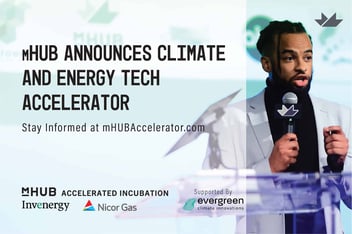According to the IEA (International Energy Agency), as much as 90% of global electricity generation will need to come from renewable energy if the world wants to achieve net-zero emissions by 2050. A long way to go if you know that renewable stood at 29% in 2020.
A major challenge for renewable energy is its variability: there is only wind energy if the wind blows, or solar when the sun shines. One therefore needs energy storage systems (e.g., batteries) to store renewable energy when it is available but not needed. Other forms of renewable energy, such as hydroelectric, biomass and geothermal energy don’t need separate energy storage. The latter are called dispatchable renewable generators since these are sources of electricity that can be dispatched on demand at the request of power grid operators. However, these sources have constraints of availability (e.g., geography and water).
Thanks to technological advances and policy incentives, the costs of onshore wind and solar power have declined by 44% and 87% respectively since 2005. Variable renewable energy sources are not only subject to weather conditions, but they are also more distributed (wind farms are distributed versus traditional power plant) and rely on invertors (power electronic devices that change the direct current from solar panels or wind turbines into alternating current for electricity grids). All of this results in overall stability and network adequacy challenges for electricity system operators: coping with demand-flexibility through a combination of dispatchable and variable renewable energy, updated electricity grid infrastructure and tools, and inclusion of long-duration energy storage systems. All areas where significant innovation is needed and is happening.
With continuing reductions in manufacturing costs of solar roof panels and improvements in the ability to install equipment, rooftop solar photovoltaics used in homes and commercial and industrial buildings are currently seen as the fastest way to increase sustainable-energy supplies. The authors of a new study by academia mapped the global land surface and identified from this the rooftop area for solar panels. Based on machine learning algorithms the authors determined the potential to generate energy. They found that the potential exceeds 2018 global energy consumption. However, further work is needed to determine how much of this electricity might be usable; future potential would depend on factors such as the development and cost of ways to store and distribute the energy.
Despite value chain disruptions and economic uncertainties, corporate demand for renewable energy stayed strong in 2021 according to GreenBizz. The fourth quarter brought the second-largest capacity add by U.S. companies, reaching 6.7 gigawatts (Q4 2020 was 7.3 GW). The cast of players in corporate clean energy procurement continues to expand too, with more industrial and manufacturing companies turning to clean energy deals. Of the 11 top contracts noted in the latest tracker by GreenBizz, more than half come from companies in the manufacturing, chemical and industrial sectors. This evolution is interesting, as tech giants usually dominate this roundup.
In the global quest for clean energy, hydrogen is entering the field by decarbonizing parts of the economy that are relying on fossil fuels. Hydrogen could account for up to 12% of global energy use by 2050, leading to the rise of new energy superpowers, according to a recently released report by the International Renewable Energy Agency (IRENA). Because hydrogen is emerging as a critical technology to reach net-zero carbon emissions, Goldman Sachs identified this as the reason why more than 30 countries have released official hydrogen strategies and road maps to ramp up hydrogen consumption and develop the required infrastructure.
Hydrogen is the most equitable of all fuels because it can be produced anywhere there is access to electricity and water using a process called electrolysis, where an electric current is used to split hydrogen from oxygen through an electrochemical reaction. Although hydrogen is abundantly available in various forms and carbon free when consumed, the challenge today is that current production process is carbon-intensive and that alternative and cleaner production methods are too expensive. However once economically attractive, substituting clean hydrogen in existing applications yield a reduction of 2% of worldwide emissions. Using clean hydrogen in other and new applications such as transport and energy storage will further increase this reduction. However, challenges such as cheaper electrolysis, safe transportation and storage of hydrogen, and equipment for consumption of hydrogen will need to be solved economically. Goldman Sachs’ research estimates it will take upwards of $5 trillion in investment by companies and countries to build out the infrastructure and technology needed to make the hydrogen economy a reality.
Depending on the type of production, the energy industry differentiates types of hydrogen using a color palette. Green hydrogen is created without emissions – it is made by using clean electricity from surplus renewable energy sources to electrolyze water, emitting zero-carbon dioxide in the process. If harnessed, clean (or green) hydrogen has great decarbonization potential. It promises to provide seasonal, clean energy storage. It could also be plugged into various industrial processes that currently rely on natural gas.
Blue hydrogen is produced mainly from natural gas, using a process called steam reforming, which brings together natural gas and heated water in the form of steam. The output is hydrogen – but also carbon dioxide as a by-product. That means carbon capture and storage is essential to trap and store this carbon. (The chemical industry can also produce blue hydrogen during its manufacturing process which in its turn can fuel its manufacturing.)
Currently, grey hydrogen is the most common form of hydrogen production. It is created from natural gas, or methane, using steam methane reformation but without capturing the greenhouse gases made in the process. Despite efforts to shift away from fossil-based hydrogen, it is expected that it will play a critical role demand until the green hydrogen value chain matures to commercialization.
Technology and funding are no longer barriers according to the Hydrogen Council. The problem now is the plain hard work of implementation. Some of the 500 projects that are currently ongoing have two-, three-, four-year implementations. Broad acceptance of hydrogen will take the work of policymakers to drive technology development for production and enable cost-effective infrastructure to scale-up transportation. The Department of Energy’s Hydrogen Shot initiative aims to bring down the cost of clean hydrogen by 80% in a decade. “On a multi-gigawatt hydrogen project, the procurement alone can take 9-12 months, let alone construction and operationalization. We need now to focus on those first steps in implementation to unlock all the hard work that follows”, according to the Hydrogen Council. Mads Nipper, CEO of the Danish power firm Ørsted, took an even more expansive view, sharing in the Fortune CEO Daily: “I am convinced that come to 2030, pretty much everywhere in the world, green hydrogen would be competitive.”
Renewable energy is an essential step on the journey towards net-zero emission. Significant innovation in the broader renewable field is happening, but much more needs to be done. Improving the efficiency of wind, solar energy, and energy storage to cope with its variability is needed. Huge investments are also required in the production, transportation and storage to make hydrogen economically viable.
###
Meet the Energy Tech Startup Teams that are graduating from the mHUB Accelerator program!






